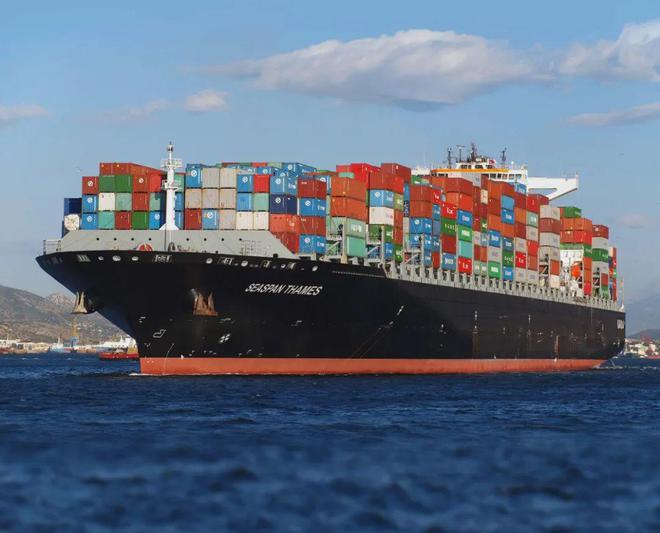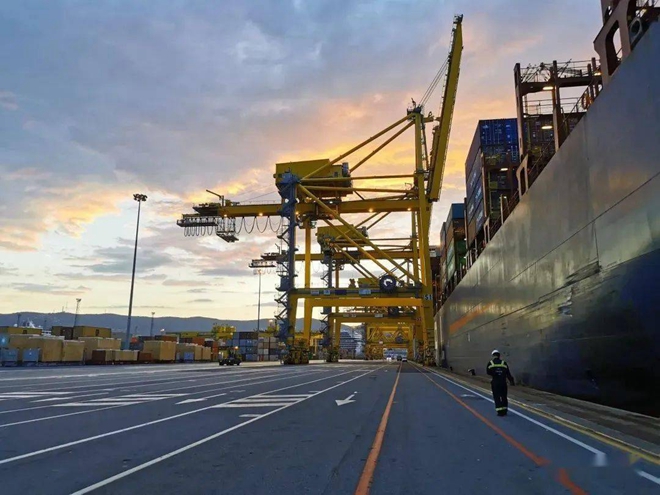"At present, China's shipowners have a fleet size of 249.2 million gross tons, from the gross tonnage of the world's largest shipowning country. China's maritime service network throughout the world, inland waterway shipping advantages to further play, the national waterway freight volume, cargo turnover in the comprehensive transportation system accounted for 16.9% and 53.5%, respectively, a strong service to the country's economic and social development." At the recent press conference of the North Bund International Shipping Forum, the relevant person in charge of the Water Transportation Bureau of the Ministry of Transportation introduced the latest progress in the high-quality development of the shipping industry.
Gao Haiyun, second-level inspector of the Water Transportation Bureau of the Ministry of Transportation, introduced that the shipping industry is an important part of the comprehensive transportation system, which is an important support to serve economic and social development and major national strategies, and to help realize the modernization of the Chinese style. Maritime transport has undertaken about 95% of China's foreign trade transportation, and plays an important role in guaranteeing the transportation of imported food, energy resources and other key materials and domestic and international logistics supply chain security and stability and smooth flow.

At present, China has established shipping routes with more than 100 countries and regions, and its service network has been constantly improved, with the degree of maritime transportation connectivity leading the world. China's port cargo throughput and container throughput for many years ranked first in the world, in the world's port throughput, container throughput ranked top ten ports, China accounted for 8 seats and 7 seats. 2022, the national port cargo throughput amounted to 15.685 billion tons, container throughput of 296 million TEUs. Inland waterway freight volume for many consecutive years ranked first in the world, inland waterway navigation mileage ranked first in the world, the Yangtze River trunk line for many consecutive years to become the world's busiest inland waterway transport, the largest volume of golden waterway. 2022 China's inland waterway transport completed freight volume of 4.402 billion tons, cargo turnover of 1.9 trillion tons of kilometers to support the service to safeguard the ability of the regional economic development has been significantly enhanced.
"China's major water transportation major projects are actively promoted, and investment in fixed assets maintains rapid growth." Gao Haiyun introduced, 2022 China completed water transportation construction investment of 167.9 billion yuan, an increase of 10.9%; the first half of this year completed water transportation construction investment of 93.6 billion yuan, an increase of 26.7%, fixed asset investment to maintain a high level of operation.
In terms of iron and water intermodal transportation, the volume of iron and water intermodal transportation in 2022 was 8,747,000 TEUs, up 16% year-on-year; in the first half of this year, the volume of containerized iron and water intermodal transportation was completed at 4,778,000 TEUs, up 9.4% year-on-year. Actively promote the high-quality development of waterway passenger transportation, domestic waterway tourism and passenger transportation high-quality routes in-depth, service quality and level continues to improve. Promoting port service capacity enhancement project, 11 container hub seaports and 15 key port enterprises have established "one-stop" online business acceptance service platform, reefer container port and navigation service quality continues to improve.

In terms of intelligent development, the construction of smart ports and smart waterways has been pushed forward, with 16 automated container terminals completed and more than 10 under construction, ranking the first in the world in terms of scale of construction and under construction. The mileage of the national electronic waterway map has exceeded 5,700 kilometers, and the electronic waterway map of the Yangtze River system has continued to promote the connection of the trunk and branch. The digital transformation of shipping has been actively promoted, and the application of blockchain-based platforms for electronic release of imported containers and bulk cargoes has been expanding. The international maritime industry has opened up to the outside world in a comprehensive manner, and 70 bilateral and regional maritime agreements have been negotiated and signed with 66 countries and regions; the Shanghai International Shipping Center has basically been built, and the international influence of maritime transport has been significantly enhanced. China has been elected as a Class A member of the International Maritime Organization for 17 consecutive years, and its ability to participate in global maritime governance has been steadily enhanced.
This year marks the 10th anniversary of the "Belt and Road" initiative. Gao Haiyun said that China has made every effort to ensure the stability and smooth flow of the international logistics supply chain. In the face of the tension in the international logistics supply chain, we have guided the international liner companies to optimize the capacity input of their routes and made every effort to ensure the capacity of China's major foreign trade container routes. Optimize and improve the operation monitoring of key materials in ports, enhance the capacity of ore, container terminals and grain transit warehousing facilities in coastal ports, and improve the capacity and level of waterway transport guarantee for key materials and international containers such as grain, fertilizer, coal, liquefied natural gas, and so on. Continuously play the role of water transportation "ballast" to ensure that "export goods can go, imported goods come in", to ensure the stability of the global industrial chain supply chain to contribute to China's strength.

